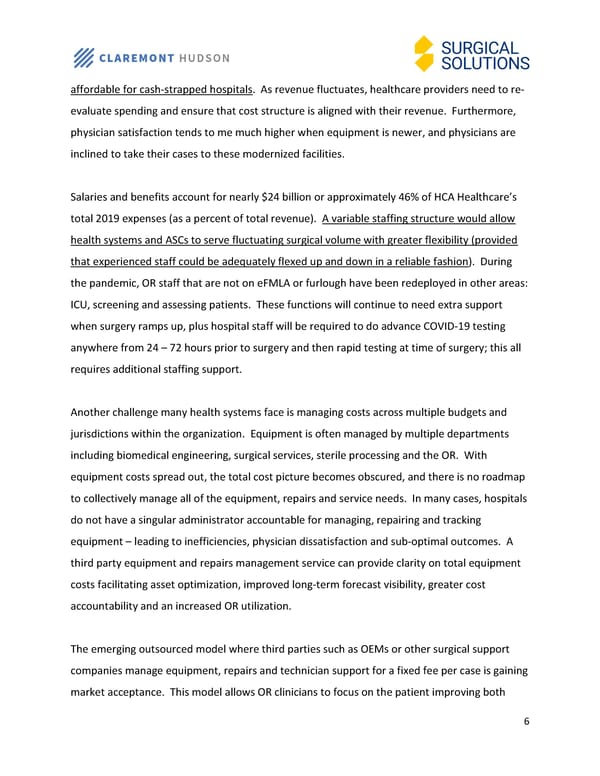affordable for cash-strapped hospitals. As revenue fluctuates, healthcare providers need to re- evaluate spending and ensure that cost structure is aligned with their revenue. Furthermore, physician satisfaction tends to me much higher when equipment is newer, and physicians are inclined to take their cases to these modernized facilities. Salaries and benefits account for nearly $24 billion or approximately 46% of HCA Healthcare’s total 2019 expenses (as a percent of total revenue). A variable staffing structure would allow health systems and ASCs to serve fluctuating surgical volume with greater flexibility (provided that experienced staff could be adequately flexed up and down in a reliable fashion). During the pandemic, OR staff that are not on eFMLA or furlough have been redeployed in other areas: ICU, screening and assessing patients. These functions will continue to need extra support when surgery ramps up, plus hospital staff will be required to do advance COVID-19 testing anywhere from 24 – 72 hours prior to surgery and then rapid testing at time of surgery; this all requires additional staffing support. Another challenge many health systems face is managing costs across multiple budgets and jurisdictions within the organization. Equipment is often managed by multiple departments including biomedical engineering, surgical services, sterile processing and the OR. With equipment costs spread out, the total cost picture becomes obscured, and there is no roadmap to collectively manage all of the equipment, repairs and service needs. In many cases, hospitals do not have a singular administrator accountable for managing, repairing and tracking equipment – leading to inefficiencies, physician dissatisfaction and sub-optimal outcomes. A third party equipment and repairs management service can provide clarity on total equipment costs facilitating asset optimization, improved long-term forecast visibility, greater cost accountability and an increased OR utilization. The emerging outsourced model where third parties such as OEMs or other surgical support companies manage equipment, repairs and technician support for a fixed fee per case is gaining market acceptance. This model allows OR clinicians to focus on the patient improving both 6
 Operating Room Insourcing Versus Outsourcing Page 5 Page 7
Operating Room Insourcing Versus Outsourcing Page 5 Page 7